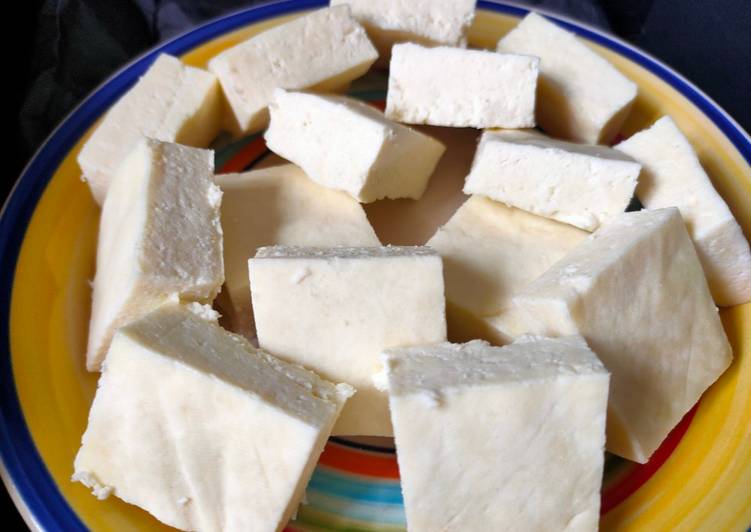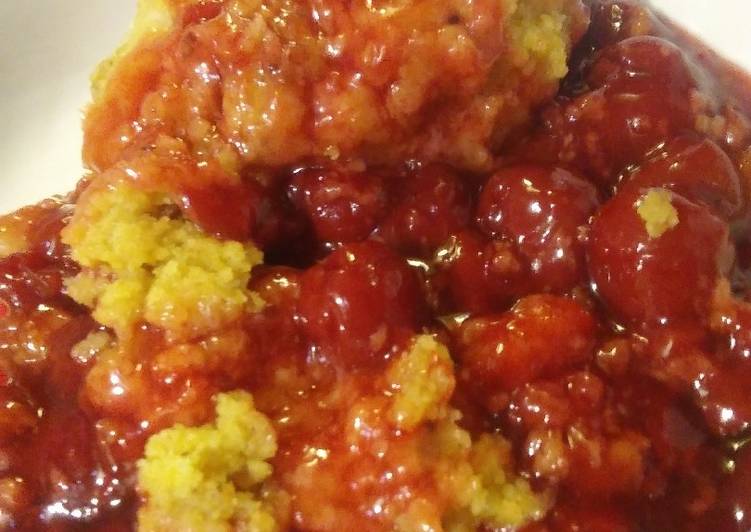
Hey everyone, hope you are having an incredible day today. Today, I will show you a way to prepare a distinctive dish, paneer / cottage cheese. It is one of my favorites. For mine, I will make it a little bit tasty. This will be really delicious.
Paneer / cottage cheese is one of the most well liked of recent trending meals in the world. It’s enjoyed by millions every day. It’s easy, it’s fast, it tastes delicious. Paneer / cottage cheese is something which I’ve loved my entire life. They’re nice and they look wonderful.
Paneer, a semisolid, cubed form of cottage cheese, is favored in the north and east India. "Paneer" — literally "cheese" in Hindi — readily takes on the flavor of the spices in which it cooks. Paneer adds a rich and creamy flavor to Indian desserts, such as Sandesh, rasgulla, and rasmalai. A special favorite with north Indians, paneer (cottage cheese), with its delicate milky flavor, is used all over India to make delicious dishes. Paneer (pronounced ) or Indian cottage cheese is a fresh cheese common in the Indian subcontinent made from cow or buffalo milk.
To get started with this recipe, we have to prepare a few components. You can have paneer / cottage cheese using 5 ingredients and 13 steps. Here is how you can achieve that.
The ingredients needed to make Paneer / cottage cheese:
- Prepare Ingredients
- Get 4 litres full cream milk
- Make ready 1 tsp citric acid (limbu na ful)
- Get Other items required
- Make ready as required Muslin cloth (I use a cotton white dupatta)
You can't extract the Paneer pieces for delicacies like Paneer tikka masala and family. Hey Tisha, in India paneer and cottage cheese are the same thing. Paneer is a firm cheese like I've shown in the pictures. Its slightly different from the cottage cheese sold in America and Europe where the cheese is softer.
Steps to make Paneer / cottage cheese:
- Make citric acid solution by adding 5-6 tbsp water to it and diluting thoroughly. You can also use vinegar instead of citric acid solution. Both are good curdling agents. Boil milk till it rises. Start adding the the curdling agent a little at a time.
- Stir the milk for a minute everytime you add the curdling agent. Every time it is added, you'll notice that the milk gets curdled further. Continue to add it a little at a time till you get big lumps of paneer with greenish water as in picture 3. (Tip: Most people mistakenly consider picture 2 as paneer and that's how they end up with a disaster)
- Place a colander on a pot. Cover the colander with a muslin cloth. As soon as the green whey and paneer separate, pour it into the muslin cloth. (Tip: if you keep paneer in hot whey/water for longer, all the oil content from paneer gets washed away which makes paneer dry and chewy.)
- Once all the green water is drained out from it, add cold water into paneer and wash it to get rid of the sourness from the curdling agent as well as to cool it down so the oil content is locked in.. Collect all the edges of the cloth together and squeeze out water as much as possible. Hang it on the tap for about half an hour so that the extra water drops out and paneer starts to form together.
- Place the lid with holes upside down near the water way. Place the paneer with cloth on it and shape paneer by pressing on the top and sides to get the desired thickness and shape. You can clearly see in the pic how my paneer has been given a shape along with the cloth.
- Fold the extra cloth neatly around paneer at the marks seen. There must be no lump of cloth on any side. Place the lid without holes on it.
- Put the weight on it ensuring stability. Leave it so for at least an hour and a half and not longer than 2 hours. Remove weight and unwrap the cloth. You'll see firm paneer. (Tip: heavy weight helps to squeeze out extra water from paneer very well. The heavier the weight, the lesser the time to prepare paneer. I have had most paneer disasters due to the ratio of weight and time)
- Cut paneer into desired size and shape with a sharp knife. You may trim the sides of paneer if you are not happy with it. This paneer can also be crumbled for the dishes like paneer bhurji or stuffed paneer kulcha. Use it fresh for the best taste. You may also freeze it in a regular container. Frozen paneer should be kept in warm water for 15-20 minutes before use.
- In most Punjabi sabzi, paneer can be added without frying. But if you want to add fry it, stir fry it in a pan all around just until it changes colour slightly. If you wait till it gets brownish, you may end up having chewy paneer. If you are not using paneer straight after frying, it is advisable to rest it in warm water to avoid it from getting chewy.
- Is your paneer too crumbly to shape it together? Reasons for dry and crumbly paneer : 1. Too much curdling agent. 2. Kept under weight for longer. 3. Not removed from the hot whey immediately.
- Paneer breaks after adding in sabzi ? Is the paneer not firm enough? Does it break as you cut or lift it in your hands ? The reasons are..1. it didn't curdle well enough. 2. It did not rest under the weight for longer enough.3. the weight wasn't heavy enough to squeeze out water from paneer.
- Is your paneer chewy? The reason could that it has lost its oil content. This happens if you take time in draining out the hot whey from Paneer or if it is kept in hot water. Sometimes if the pot under the colander is so small that the whey overflows into the colander where the paneer is. And this way the oil content of the paneer gets washed out even after draining it.
Paneer is a firm cheese like I've shown in the pictures. Its slightly different from the cottage cheese sold in America and Europe where the cheese is softer. Paneer (cottage cheese) is the most widely used fresh cheese in Indian recipes. It is very versatile and is used in making tikka, curry, salad, and sweets. Grated paneer can be sprinkled on the dosa, pizza, pasta, or rice.
So that’s going to wrap it up with this special food paneer / cottage cheese recipe. Thank you very much for your time. I am confident you will make this at home. There is gonna be interesting food in home recipes coming up. Don’t forget to bookmark this page in your browser, and share it to your family, friends and colleague. Thanks again for reading. Go on get cooking!

